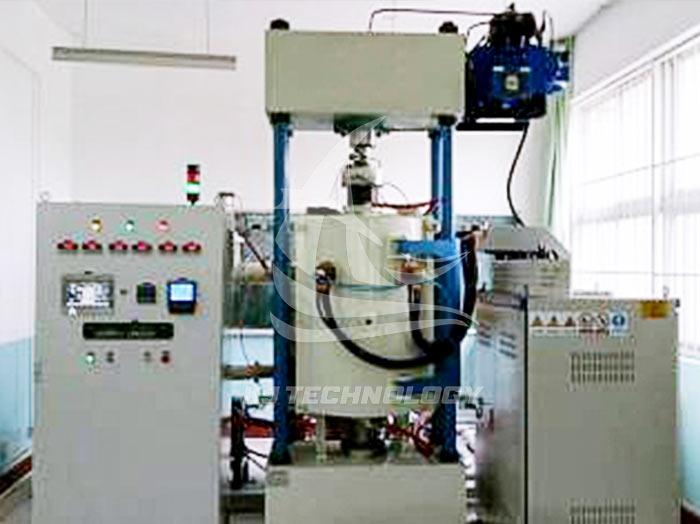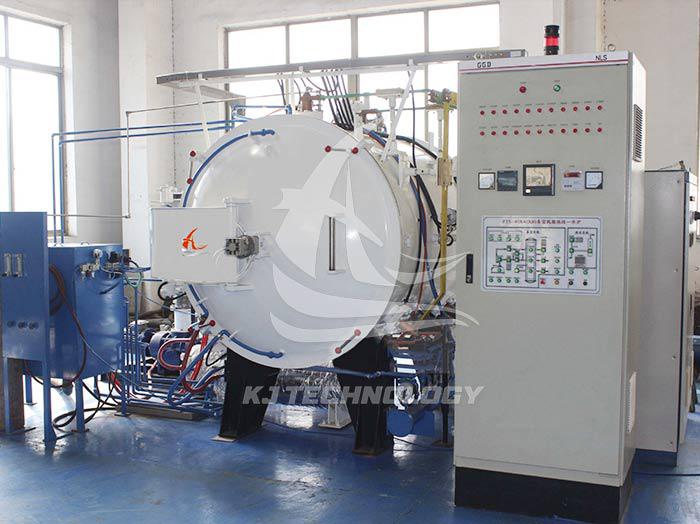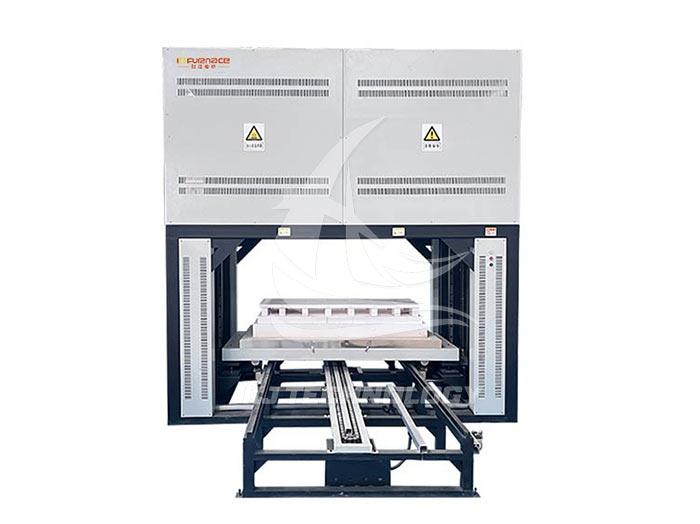Gas quenching furnace gas types
 10-27-2025 Author: KJ technology
10-27-2025 Author: KJ technology
The commonly used gas types in gas quenching furnaces mainly include nitrogen (N ₂), hydrogen (H ₂), argon (Ar), and helium (He), which have their own characteristics in cooling capacity, safety, economy, and are suitable for different process requirements.
1. Nitrogen (N ₂)
Characteristics: Nitrogen is the most commonly used quenching gas, a neutral gas with stable chemical properties, and is not easily reactive with metals.
Advantage:
Low cost: Nitrogen has a wide range of sources, low production costs, and is easy to obtain.
High safety: Nitrogen is non flammable, has no risk of explosion, and is safe to operate.
Moderate cooling capacity: Under high pressure, nitrogen can provide sufficient cooling speed to meet the heat treatment needs of most metals.
Application Scenario:
Quenching of materials such as automotive gears, mold steel, and high-speed steel.
Large scale workpieces or mass production are suitable for large-scale applications due to the low cost of nitrogen gas.
case
The gears of the automobile transmission are quenched with 1-2MPa nitrogen gas, which reduces tooth distortion and significantly improves the pass rate.
The 5-ton H13 steel die-casting mold is quenched with 1.5MPa nitrogen gas, which extends the life of the mold.
2. Hydrogen (H ₂)
Characteristics: Hydrogen has extremely high thermal conductivity and the fastest cooling rate, but its safety is relatively low.
Advantage:
High cooling efficiency: Hydrogen has a higher thermal conductivity and can achieve extremely fast cooling speeds.
Reduce deformation: Rapid cooling can suppress carbide precipitation and reduce workpiece deformation.
Disadvantages:
Poor safety: Hydrogen is flammable and explosive, requiring strict safety measures.
High cost: The production and storage costs of hydrogen are relatively high.
Application Scenario:
High strength steel, high-speed steel, and other materials that require extremely high cooling rates.
Laboratory or small-scale production, limited for large-scale application due to safety risks.
case
Some high-strength steels are quenched using hydrogen gas, which increases the cooling rate, but requires explosion-proof facilities.
3. Argon (Ar)
Characteristics: Argon is an inert gas with extremely stable chemical properties, but its cooling ability is weak.
Advantage:
High safety: Argon gas is non flammable and has no risk of explosion.
Suitable for special materials: For easily oxidizable materials such as titanium alloys and nickel based alloys, argon gas can provide a non oxidizing environment.
Disadvantages:
Slow cooling rate: The thermal conductivity of argon is lower than that of nitrogen, requiring higher pressure or mixed gas to enhance cooling capacity.
High cost: The price of argon is several times higher than that of nitrogen, and its economy is poor.
Application Scenario:
Quenching of high-end materials such as titanium alloys and nickel based alloys.
Precision parts with extremely high requirements for surface quality.
case
Some aerospace components are quenched with argon gas to avoid oxidation, but the cost is relatively high.
4. Helium (He)
Characteristics: Helium is an inert gas with thermal conductivity second only to hydrogen, but its cost is extremely high.
Advantage:
Fast cooling speed: Helium has a higher thermal conductivity, second only to hydrogen.
High safety: Helium is non flammable and poses no risk of explosion.
Disadvantages:
Extremely high cost: Helium is a rare gas, expensive, and usually only used for special occasions.
Application Scenario:
In scenarios where laboratory research or high-end manufacturing require extremely high cooling speed and safety.
case
Some special alloys are quenched using helium gas, but due to cost limitations, its application is limited.
Gas selection suggestions
Prioritize nitrogen: Nitrogen is the most commonly used gas in gas quenching furnaces due to its low cost, high safety, and moderate cooling capacity, and is suitable for the heat treatment needs of most metals.
Special material selection of argon/helium: For easily oxidizable materials such as titanium alloys and nickel based alloys, or precision parts with extremely high surface quality requirements, argon or helium can be selected.
Hydrogen selection for high-speed cooling (caution): For materials such as high-strength steel and high-speed steel that require extremely fast cooling rates, hydrogen can be considered, but strict safety measures are required.








